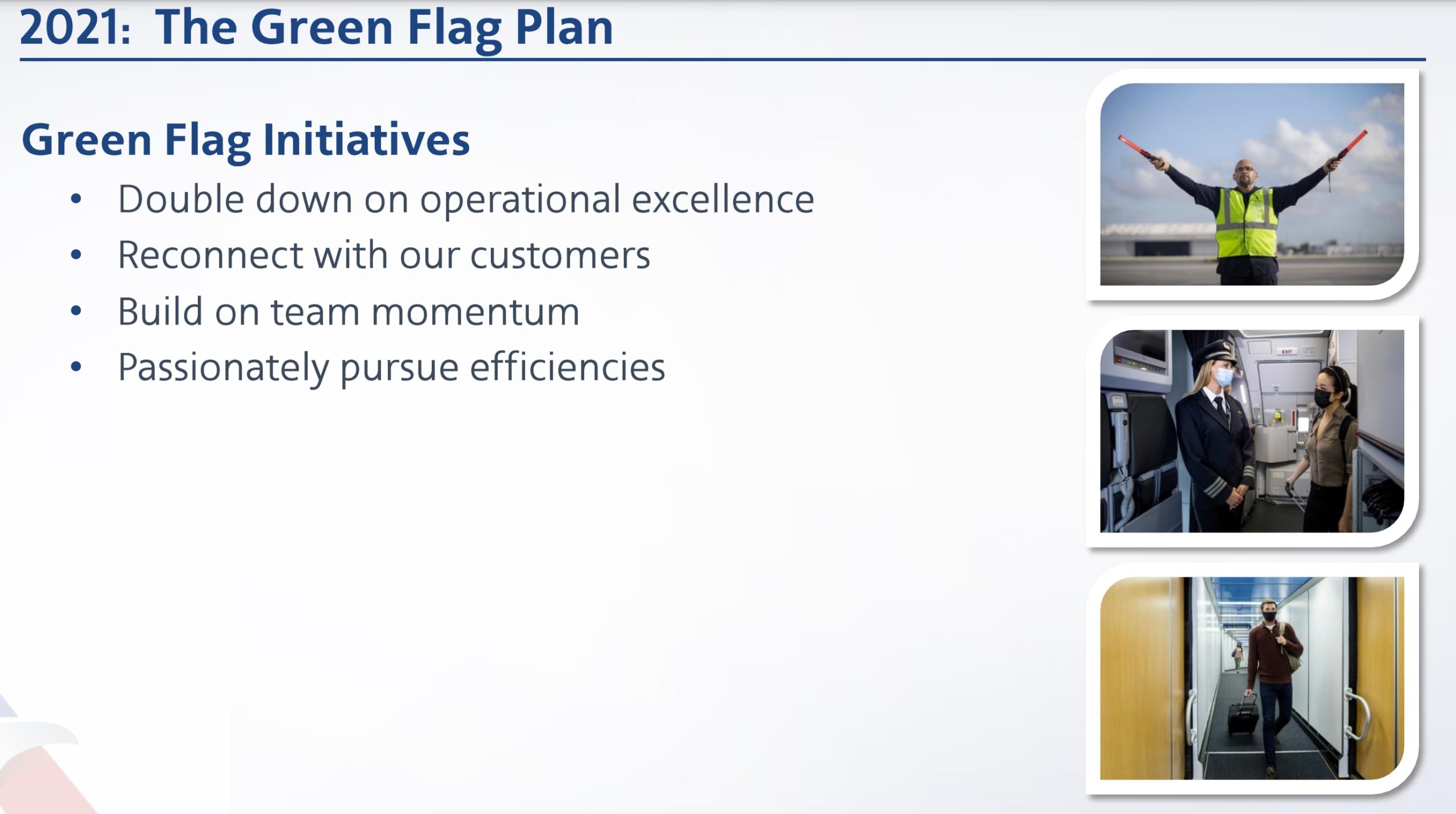At the beginning of February I wrote that American Airlines has 3 corporate goals, and two of them are weird. What stood out was the carrier’s goal to “passionately drive efficiencies.”
He presented the company’s goals to ‘come out ahead’ of competitors in front of investors at the J.P. Morgan Industrials Conference.

American has become more efficient. They retired 5 fleet types and 150 aircraft. They eliminated approximately 30% of their non-union workforce. And they sped up the conversion of Boeing 737s that had 160 nicely-padded seats to feature new interiors with 172 thinner seats with less space per customer, and took out seat back entertainment screens in the process. They can now carry passengers more efficiently (172 per 737!) even if they aren’t doing so more comfortably.
Parker called out employees who have been able to “pull together, work together” particularly on lobbying for payroll support, harkening back to former American Airlines CEO Gerard Arpey who implored his team to pull together, win together.
And he noted that ‘reconnecting with customers’ means making sure American flies where people want to fly. Jeff Bezos says the most important key to success is focusing on the customer but outside of this reference to route network, the customer doesn’t get mentioned.
In the discussion Parker cited $3 billion in additional cash American is receiving from the third airline bailout (the package wasn’t really just a ‘pass-through’ to employees, but you knew this already) plus $400 million in pension relief bolstering their reserves, and pushed back on the idea that their huge debt burden makes a bankruptcy restructuring likely.
American started 2020 with more debt than any other airline, and were underperforming financially. They now have more debt than any airline in history. Parker suggests that when you factor all of the cash they’ve built on their books, much of it from the government, they have ‘only’ increased $8 billion or $9 billion in net debt, and their interest expense is just $500 million or $600 million higher.
He says their increased interest expense is ‘funded’ by the 30% reduction in non-union headcount. Another way of looking at it is their greater efficiency is eaten up by interest on debt, while other airlines have reduced costs without this offset.
While calculations are somewhat different in each case, both Delta and United claimed at the conference to have reached break-even cash burn, while American hasn’t revised their negative $30 million a day figure.


When was the last time an airline was run by an operations guy, rather than someone from the finance side? Give the customers an airline that they want to fly.
“Pursue Efficiencies” Boy that one is right off the old Bullshit Bingo card.
Thin out the non-union workforce means to get rid of any management employees that might challenge the status quo at Centerpork.
And the root of the problem w/ 172 seats on the 737 is that AAL bought the wrong model; they should have changed their orders even of NG to the -900 as AS DL and UA all did… but no, AAL not only carried down the same path but doubled down by ordering the MAX8.
Flying to all of the places that a customer wants to go is precisely why AA has lot billions of dollars over the past decade flying international routes that are profitable for Delta and United. Vasu is the dartboard picker that keeps AA’s excessively large widebody fleet in motion – and AA certain to be a fixture in Biden’s backyard for at least the next 3 years.
Why would Doug think about retirement?
With 500 *billion* in interest payments, AA should be folding as a going concern in 3…2…1…
“their interest expense is just $500 billion or $600 billion higher” Are you sure this isn’t million rather than billion?
Get ready for 200 pax on the 37’s
With the almost complete loss of business travellers — who will obviously be much slower to return than leisure travellers — any airline not “passionately pursing efficiencies” to account for lower average ticket prices will be a financially troubled airline. Even with gov’t subsidies.
Raise ticket prices and bring back regulations , PLEASE !!!!!!!!!!!!!!